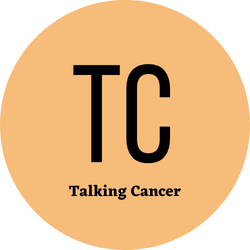What is Cancer?
by siteadmin

Cancer is a group of diseases in which abnormal cells grow uncontrollably and can invade nearby tissues. They can also break away and spread to other parts of the body.
Scientists have long wondered what causes cancer and how it develops. These questions led to the development of several key understandings of the disease.
Causes
Cancer occurs when damaged cells grow and divide in an uncontrolled manner. This process causes abnormal tissues and organs to form, which can affect the immune system and other parts of the body.
A number of factors can cause cancer, including changes in the genetic code and exposure to certain chemicals. Lifestyle choices, such as smoking and excessive sun exposure, also increase the risk of cancer.
The cell’s DNA, or the genetic code that carries instructions for how cells grow and divide, can be damaged by a variety of factors, such as infection, cancer-causing chemicals (carcinogens), smoking, and radiation exposure.
Infections, such as the virus that causes AIDS and the Epstein-Barr virus, can cause cancer by changing genes that control cellular growth and repair. Exposure to certain chemical substances, such as pesticides and fertilizers, may also play a role.
Symptoms
Symptoms can vary widely, depending on the type of cancer and where it is affecting the body. Some symptoms are common, such as weight loss and fever.
Others are less common, such as pain and changes in the skin or bones. Those who experience these signs and symptoms should seek medical attention.
Some cancers can cause problems with the digestive tract, such as bloating or trouble swallowing. Other symptoms may involve the brain, such as a headache or difficulty with speech.
Fever that doesn't go away or that reaches above 100.5 degrees Fahrenheit is another sign of cancer. It is common for people with certain types of cancer to have fevers, especially after the tumor has spread to other parts of the body.
Back pain, especially in children, can be a symptom of leukemia or a metastatic solid tumor. Always investigate backaches, even if they are not severe or persist for more than 6 weeks.
Diagnosis
The diagnosis of cancer usually involves a complete physical exam and a thorough medical history. Laboratory studies can also detect abnormalities that may indicate cancer.
When your doctor suspects you have cancer, imaging tests, such as X-rays, computed tomography (CT) scans, magnetic resonance imaging (MRI), or ultrasound, can help determine the location and size of the tumor. If your doctor finds a tumor, they will need to perform a biopsy.
Once your doctor has confirmed that you have cancer, they will use the results of the tests and other information to plan treatment. Treatment plans can include surgery, radiation therapy, chemotherapy, hormone therapy, or immunotherapy. It also depends on the type and stage of the cancer.
Treatment
Getting a cancer diagnosis can be scary, but many treatment options are available. Your doctor will recommend a plan that's right for you.
Surgery is a common type of treatment for cancer, especially early-stage cancers that haven't spread to other parts of your body. It removes tumors and some nearby tissue, including lymph nodes.
Chemotherapy is another popular treatment. This uses special medicines to shrink or kill cancer cells and stop them from growing or spreading.
Targeted therapy is a form of chemotherapy that targets specific parts of cancer cells or nearby cells that help them grow. It's often used with standard chemotherapy but can also be used alone.
Immunotherapy is a newer approach that boosts your immune system's ability to fight cancer. This may give some people with late-stage cancers a treatment option they didn't have before.
Other types of treatment include radiation therapy, hormone therapy, and stem cell transplants. These treatments use high-energy rays or drugs to kill cancer cells or block them from getting the hormones they need to grow.
Cancer is a group of diseases in which abnormal cells grow uncontrollably and can invade nearby tissues. They can also break away and spread to other parts of the body. Scientists have long wondered what causes cancer and how it develops. These questions led to the development of several key understandings of the disease. Causes…
Recent Posts
- A Stronger, More Comfortable, More Stable Walking Aid: Groundbreaking Features of the StrongArm Comfort Cane
- Sons of Monaco Painting Unveils the Ultimate Solution: Roll vs. Spray for Exterior Paint
- A Stronger, More Comfortable, More Stable Walking Aid: Groundbreaking Features of the StrongArm Comfort Cane
- Exploring Integrative Medicine and Alternative Therapies: Enhancing Health and Fitness Holistically
- Embracing Patient-Centered Care Models: Revolutionizing Health and Fitness
